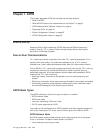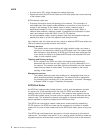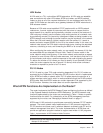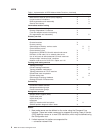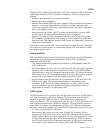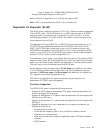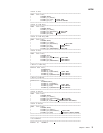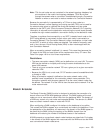Protocol (RTP) is used by the endpoints of the HPR connection. HPR intermediate
nodes have no session or RTP connection awareness. This new transport layer
features:
v Selective retransmission error recovery procedure
v Segmentation and reassembly
v Adaptive Rate-Based (ARB) flow and congestion control mechanism that meters
data onto a route that allows efficient utilization of network resources while
minimizing congestion. ARB uses a preventative rather than reactive approach to
flow and congestion control.
v Non-disruptive Path Switch (NDPS) function that automatically reroutes traffic
around node or link failures without disrupting end user sessions.
v Detection of Forward Explicit Congestion Notification (FECN) bit set, allowing
RTP’s adaptive rate-based flow and congestion control algorithm to adjust the
data send rate. This algorithm prevents traffic bursts and congestion, maintaining
a high level of throughput.
The router implements both ANR routing and Rapid Transport Protocol. Therefore,
the router can function both as an intermediate routing HPR node and as an HPR
connection endpoint node.
Interoperability
HPR uses APPN network control functions including class of service (COS)-based
least-weight route calculation and transmission priority. HPR interoperates
seamlessly with APPN ISR:
v The network automatically adapts to the presence of HPR-capable nodes and
HPR-enabled links.
v An APPN network can have any mix of ISR and HPR links, although the greatest
benefit of HPR is realized when the network has three or more HPR-enabled
nodes with two or more HPR-capable links back-to-back. This allows the middle
HPR node to be an HPR intermediate node and use only ANR routing, allowing
session data to be routed through the middle node using only NCL.
v A given session route can be made up of a combination of ISR and HPR links.
v HPR uses the same TG and node characteristics for least-weight route
calculation as APPN ISR. No special consideration is given to HPR capable
nodes or links other than their potentially improved characteristics (such as
higher effective capacity if a higher speed link).
Traffic types
APPN ISR uses the QLLC protocol for X.25 direct data link control, the IEEE 802.2
LLC Type 2 protocol for token-ring, Ethernet, PPP, and frame relay and SDLC
protocol for the SDLC data link control. APPN HPR, which is supported on
token-ring, Ethernet, PPP, and frame relay, does not use LLC Type 2 protocol, but
does use some functions of an APPN link station for XID and inactivity timeout. A
single APPN link station is therefore used for ISR or HPR. Different mechanisms
are used to distinguish between ISR and HPR traffic depending upon the DLC type:
v For token-ring and Ethernet LAN ports:
Each protocol that uses a port must have a unique SAP address, with the
exception of DLSw (which may use the same SAP address as other protocols
because DLSw frames will not be destined for the local MAC address, but rather
a DLSw MAC address). A unique SAP address identifies the APPN link station
for HPR traffic (Local HPR SAP address parameter). If ISR traffic is destined for
a link station, then a different SAP address (Local APPN SAP address
APPN
Chapter 1. APPN 7





